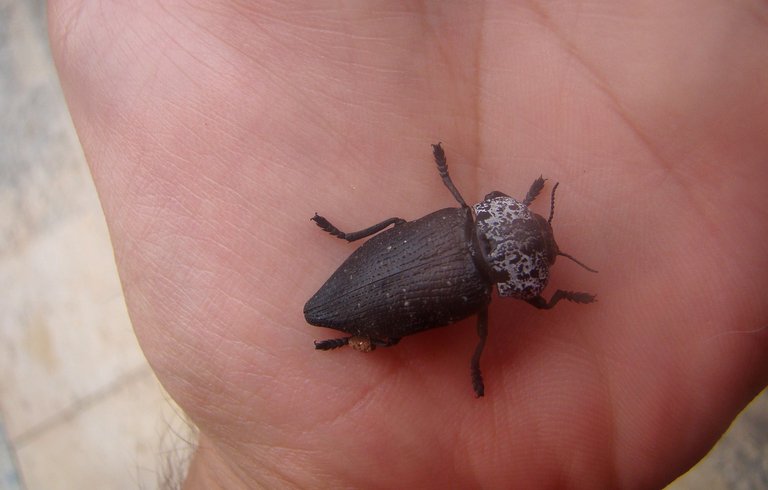DARK JEWEL IN MY HAND
Capnodis tenebrionis it's a beetle from the large and varied Buprestidae family ...
... a family that is commonly known as Jewel beetles ... and that explains the pretty bombastic title. This is a jewel beetle ... but, although this kind of beetles often come in many glittering and colorful variations, this one doesn't look like that. It's dark, mostly black with some gray patterns and markings ... and it's considered a pest on quite a few cultivated fruit trees from the Rosaceae family ... apricot, peach, plum, nectarine, cherry, and almond.
Adult feed on buds and leaf petioles, and usually prefer weakened and diseased trees rather than vigorous ones. These adults can seriously damage young trees in nurseries, orchards and greenhouses, but rarely affect established, well-cultivated and irrigated fruit-bearing orchards. Larvae feed on wood, while digging tunnels inside the roots and trunk, and are a serious risk to the survival of the tree.
I found in one text on the Internet that "a few larvae can lead to the death of the adult tree within one or two years"

I encounter these beetles every summer, but never in big numbers ... and besides the aforementioned cultivated trees, they use quite a few wild, self seeding plant for their growth and reproduction. With no big plantations around they don't seem to create problems in gardens ... there are many almonds scattered around my hometown ... and some plums & peaches can be found in gardens as well ... and all those trees seem doing well, so ... I was glad to see this interesting insect and take a few shots, back then in summer 2016.

Great
Thanks
You're welcome
Excellent photos my friend @borjan, in the world there is so much diversity of coleoptera that is simply amazing, in my city we see less and less, the ones I see more are those of the family coccinellidae, but the larger ones I have hardly seen during my research and that is worrying. Thank you for giving us a sample of the diversity of arthropods present in your country, greetings and success!
Thanks. The same here. I remember swarms of Stag beetles flying above my hometown at dusk from one patch of oak forest outside the town to another, some decades ago during the summer ... now the old oaks are mostly gone and the stag beetle is a rarity. Various coccinellidae and many Chrysomelidae are still OK and prosperous, finding their place in the gardens and small meadows ... but many species that need woods and more wild environments are getting very rare.
You framed little insects. After all really amazing photographs.
Thank you
Sangat bagus